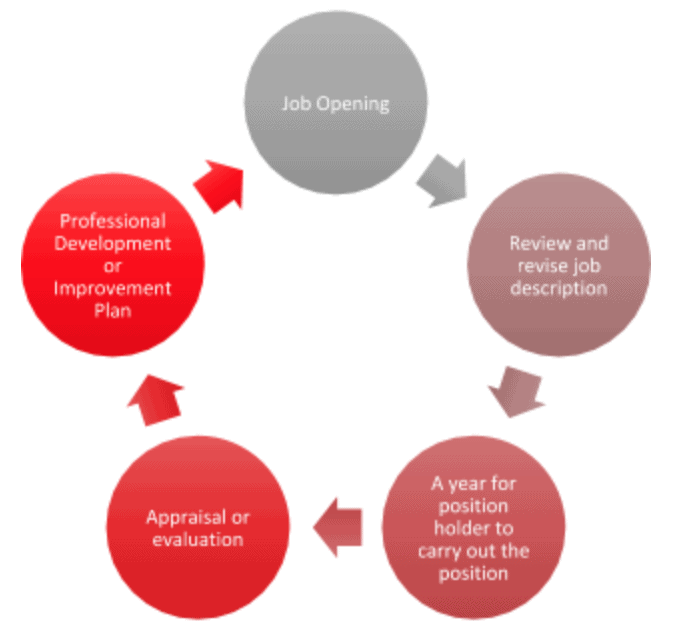by Stephanie Lin
Teacher Evaluation
Teacher Evaluation has been a topic that evokes complex feelings. Some feel anxious, confused, and uncertain; some view it as a nonchalant event, almost rubber stamping. In the international education community where each school is unique, an evaluation system can potentially help with clarity, transparency and equity. It also provides an opportunity to identify the school’s overall professional development needs and each individual’s professional goals. While each school works to fulfill its mission, the guiding principles behind having a clear evaluation structure remains a constant: to have a system of evaluation that is based on competency and professionalism.
Teacher Perception of Evaluation
When asked about their experience of professional appraisal in their schools, there is a general sense of frustration, confusion, and distrust surrounding the performance or professional review. It is a less covered subject in international schools because it is complex and involves human emotions. Specifically, while schools ensure professional standards are being met, they also need to keep a strong pulse on the morale and the sense of job security among faculty and support staff.
The Importance of a Job Description
 How to conduct a professional evaluation is one of the main aspects in the field of Human Resources. Borrowing from a common HR framework, the aim is to create a clear, equitable, professional procedure that is based on competency and professionalism. To start a well-aligned evaluation cycle, the practice starts with a well-written job description. A clear job description attracts candidates who best match the skill sets required by the position and the school. Reviewing and revising the current job description is therefore highly advisable prior to recruitment. Working with a Human Resources Director, the program leader or coordinator, and the principal will best yield a clear job description that sets out expectations for the incoming recruits. This is also an opportunity to make adjustments by subject, department, division, and to include new knowledge and skills pertaining to the positions.
How to conduct a professional evaluation is one of the main aspects in the field of Human Resources. Borrowing from a common HR framework, the aim is to create a clear, equitable, professional procedure that is based on competency and professionalism. To start a well-aligned evaluation cycle, the practice starts with a well-written job description. A clear job description attracts candidates who best match the skill sets required by the position and the school. Reviewing and revising the current job description is therefore highly advisable prior to recruitment. Working with a Human Resources Director, the program leader or coordinator, and the principal will best yield a clear job description that sets out expectations for the incoming recruits. This is also an opportunity to make adjustments by subject, department, division, and to include new knowledge and skills pertaining to the positions.
Sometimes a new position is created and this is an opportunity to carve out specific responsibilities for both the school and the candidates. A clear job description is also a way to inform candidates of a newly created position and what the school envisions the position to be. It also keeps the school focused on why the position is created and delineates the new position from existing ones. Upon a closer inspection, you might find the nuances of each faculty position warrant a job description review. Specifically, a librarian, an IT Integrator, and a Math teacher would have vastly different responsibilities. Having a clear job description for each position will become important when evaluating the job holder.
The Cycle of a Job Description
 To ensure this is an equitable procedure, clarity in how the appraisal cycle is presented to faculty and support staff is essential. Clear instructions also demonstrate transparency and can potentially foster a stronger sense of trust from the people evaluated by the leadership.
To ensure this is an equitable procedure, clarity in how the appraisal cycle is presented to faculty and support staff is essential. Clear instructions also demonstrate transparency and can potentially foster a stronger sense of trust from the people evaluated by the leadership.
Establishing a system that places an emphasis on competency and professionalism will help develop a professional community that focuses on growth and help avoid feelings of personal judgement and favouritism during evaluations. While no one system is perfect, international schools will need to adopt a model into practice and improve it over time based on the specific needs of the school.
Evaluate Teachers as Learners
One way to guide our thinking is to consider teacher evaluation or appraisal as an assessment. When we assess our students, we set out clear expectations, provide content and support, create activities and guidelines before we get to the actual assessment. Similarly, a job description outlining main responsibilities, skills, and knowledge is setting a clear expectation. Professional development is comparable to providing learning opportunities, and the evaluation and appraisal are the assessment. When a student is unclear about what the assessment is on, the student cannot study for it. If the assessment does not inform the intended outcome, the assessment itself requires some scrutiny.
An equitable system creates strength and substance within school leadership while alleviating the stress the evaluation generates among faculty and support staff. It can also inform the school about the overall professional development needs and individual professional growth areas. By aligning the evaluation to the job description, it creates clarity and removes uncertainty. The combination of a clear job description aligned to teacher evaluation can boost trust and morale within the community and contribute to the overall health and morale within a school.
About The Author
 Stephanie Lin has worked in international education for 14 years. She has worked as a Superintendent's office manager, HR Assistant Director, Mandarin teacher, and now Librarian. Her diverse experience provided her an opportunity to view an international school as a whole with intricate and complex details; her diverse interests suggest she will continue to learn about and discover new aspects in international education. Currently, Stephanie is working on a PhD dissertation in Educational Technology focusing on middle school parent perceptions regarding digital etiquette development in children.
Stephanie Lin has worked in international education for 14 years. She has worked as a Superintendent's office manager, HR Assistant Director, Mandarin teacher, and now Librarian. Her diverse experience provided her an opportunity to view an international school as a whole with intricate and complex details; her diverse interests suggest she will continue to learn about and discover new aspects in international education. Currently, Stephanie is working on a PhD dissertation in Educational Technology focusing on middle school parent perceptions regarding digital etiquette development in children.

